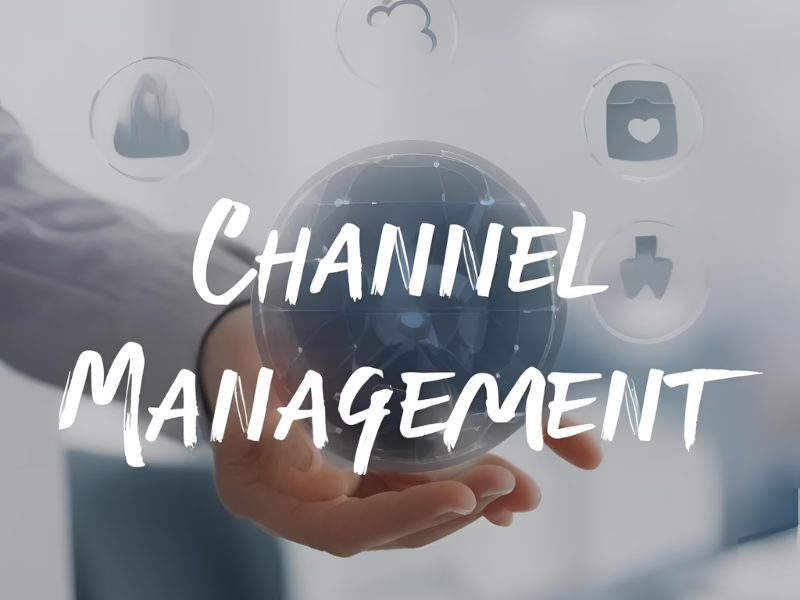Introduction: Why Channel Management Can Make or Break Your Business
Picture this: You’ve got an amazing product, glowing customer reviews, and a marketing team firing on all cylinders. But somehow, your sales are stuck in neutral. Why? Because your channel management is a mess.
Maybe your distributors are undercutting your prices. Perhaps your Amazon listings are a disaster while Walmart stock collects dust. Or worse—customers can’t find your product anywhere because inventory is scattered across a dozen disconnected systems.
Sound familiar? You’re not alone.
Channel management—the process of overseeing how your products flow through various sales channels—is the unsung hero of scalable growth. When done right, it means:
✅ Higher revenue (by optimizing every sales touchpoint)
✅ Lower costs (by eliminating inefficiencies in distribution)
✅ Happier partners & customers (by ensuring availability and fair pricing)
But when done wrong? Chaos. Lost sales. Margin erosion.
This guide will walk you through exactly how to master channel management—whether you’re a bootstrapped startup or an enterprise brand.
Section 1: What Is Channel Management? (Beyond the Textbook Definition)
At its core, channel management is about control and optimization. It’s not just picking sales channels—it’s actively managing them to maximize profitability and customer experience.
The 3 Pillars of Channel Management
- Channel Strategy
- Which channels should you sell through? (Direct? Retail? Marketplaces?)
- How do you prioritize them?
- Channel Operations
- Inventory allocation
- Order fulfillment
- Pricing enforcement
- Channel Relationships
- Partner training
- Incentive programs
- Conflict resolution
Real-World Example:
Nike’s shift toward DTC (Direct-to-Consumer)
- In 2020, Nike reduced reliance on wholesalers and doubled down on its app, website, and flagship stores.
- Result? Higher margins and better customer data.
Section 2: The 5-Step Framework for Bulletproof Channel Management
Step 1: Audit Your Existing Channels (The Good, the Bad, and the Ugly)
Before optimizing, you need a brutally honest assessment.
✔️ What to Track:
- Revenue per channel (Which bring in the most profit?)
- Customer demographics (Are Amazon buyers different from your Shopify customers?)
- Operational bottlenecks (Which channel is a logistical nightmare?)
🚫 Common Mistakes:
- Ignoring unprofitable channels because “they’ve always been there.”
- Letting distributors set their own rules (chaos incoming).
Tool Recommendation: Tableau or Power BI for visualizing channel performance.
Step 2: Set (and Enforce) Channel Rules
If you don’t set rules, your partners will. And you won’t like them.
📌 Must-Have Policies:
- Minimum Advertised Price (MAP): Prevent rogue retailers from discounting too deep.
- Exclusive Territories: Avoid cannibalization between partners.
- Inventory Commitments: Ensure high-demand products don’t vanish from key channels.
🔥 Pro Tip: Use automated price monitoring tools (like RepricerExpress) to catch violators.
Step 3: Automate the Chaos Away
Manual channel management = spreadsheet hell.
Top Automation Tools:
| Category | Best Tools | Why They Rock |
| Inventory Sync | TradeGecko, Cin7 | Prevents overselling |
| Order Routing | ShipStation, Ordoro | Sends orders to the right warehouse |
| Marketplace Mgmt | Sellbrite, Feedonomics | Sync listings across Amazon, eBay, Walmart |
Case Study:
A cosmetics brand used Sellbrite to unify inventory across Shopify and Amazon. Result? 30% fewer stockouts and 20% higher sales in 6 months.
Step 4: Train & Motivate Your Partners
Your retail partners won’t magically prioritize your products. You need to incentivize them.
🎯 Partner Incentives That Work:
- Volume Discounts (“Sell 100+ units/month, get 5% off”)
- Co-Op Advertising (Split the cost of Google Ads or in-store promotions)
- SPIFF Programs (Cash bonuses for hitting targets)
📢 Communication Tips:
- Host quarterly webinars to train partners on new products.
- Create a partner portal with marketing assets and real-time performance data.
Step 5: Monitor, Optimize, Repeat
Channel management isn’t “set it and forget it.”
📊 Key Metrics to Watch:
- Sell-Through Rate (% of inventory sold in a period)
- Days of Supply (How long until stock runs out?)
- Channel Profitability (After fees, which channels actually make money?)
🔄 When to Pivot:
- If a channel’s cost of servicing outweighs revenue, exit gracefully.
- If a new marketplace (like TikTok Shop) gains traction, test aggressively.
Section 3: Advanced Channel Management Tactics for Maximum Impact
Tactic #1: AI-Powered Dynamic Pricing Across Channels
Gone are the days of static pricing. In today’s hyper-competitive landscape, you need real-time price optimization that responds to:
- Competitor price changes
- Inventory levels
- Demand fluctuations
- Channel-specific buyer behavior
How to Implement It:
- Choose the Right Tool: Platforms like ProsperStack or RepricerExpress use machine learning to adjust prices automatically.
- Set Guardrails: Define your minimum/maximum price thresholds to protect margins.
- Test & Learn: Run A/B tests on different pricing strategies per channel.
Case Example:
An electronics brand used dynamic pricing on Amazon during holiday seasons. By automatically matching competitor discounts while maintaining MAP compliance, they increased conversions by 22% without margin erosion.
Tactic #2: Hybrid DTC + Wholesale Models (Without Cannibalization)
The smartest brands leverage both direct and indirect channels strategically:
Best Practices:
- Product Differentiation:
Sell exclusive colors/bundles on your website while offering standard SKUs through retailers. - Pricing Architecture:
- DTC: Full price + membership perks
- Wholesale: Volume discounts with MAP protection
- Customer Experience:
Offer B2B portals for wholesale buyers while maintaining premium DTC UX.
Pro Tip: Use Shopify Plus with B2B functionality to seamlessly manage both models.
Tactic #3: Dark Store Strategies for High-Demand Periods
When inventory gets tight, dark stores (reserved stock pools) prevent channel conflict:
When to Use Them:
- Product launches
- Holiday rushes
- Supply chain disruptions
Implementation Guide:
- Allocate 10-15% of inventory as buffer stock
- Prioritize Channels:
- First choice: Your highest-margin channel (usually DTC)
- Second: Key retail partners with contractual obligations
- Automate Replenishment: Tools like Inventory Planner can predict when to release reserved stock.
Tactic #4: Geo-Targeted Channel Optimization
Not all channels perform equally across regions. Hyper-localize your approach:
Data Points to Analyze:
- Regional e-commerce preferences (e.g., Amazon dominates US, but Tmall rules China)
- Local competitor landscape
- Shipping/logistics costs per area
Actionable Steps:
- Cluster Analysis: Group territories with similar buying patterns
- Customized Assortments:
- Cold climates? Push winter gear earlier in those regions
- Urban vs. rural? Adjust product mix accordingly
- Localized Promotions: Partner with regional influencers for market-specific campaigns
Tactic #5: Predictive Channel Analytics
Move beyond reactive reporting to AI-driven forecasting:
What to Predict:
- Channel-specific demand spikes (using historical + external data like weather trends)
- Optimal inventory allocation 6 months out
- Partner performance trajectories
Tools to Consider:
- ToolsGroup for inventory optimization
- Peak.ai for demand sensing
- Custom solutions with Microsoft Azure Synapse
Real Impact:
A sporting goods brand reduced excess inventory by 37% while improving fill rates by using predictive models to allocate stock across 200+ retail partners.
Tactic #6: Blockchain for Channel Transparency
For complex distribution networks, blockchain solves two key problems:
- Gray Market Prevention:
- Tag products with digital IDs
- Trace unauthorized diversions in real-time
- Smart Contracts with Partners:
- Automate rebates when sales targets hit
- Self-executing MAP violation penalties
Pilot Example:
A luxury watch maker reduced gray market leakage by 68% after implementing blockchain tracking across their global distributor network.
Tactic #7: Voice Commerce Optimization
With 30% of US households owning smart speakers, voice shopping channels demand attention:
Channel-Specific Tactics:
- Amazon Alexa: Optimize product descriptions for voice search (“Alexa, order more dog food”)
- Google Assistant: Ensure your Google Shopping feed is flawless
- Branded Skills: Create custom voice apps for reordering staples
Conversion Tip:
Bundle products into “voice-friendly” kits (e.g., “Coffee Lover’s Bundle” vs. individual SKUs)
Implementation Roadmap: How to Roll Out Advanced Tactics
| Tactic | Best For | Time to Implement | Team Needed |
| Dynamic Pricing | Brands on marketplaces | 2-4 weeks | Pricing analyst + IT |
| Hybrid DTC/Wholesale | Growing mid-market brands | 1-3 months | Sales ops + eCommerce |
| Dark Stores | Seasonal/limited inventory | 3-6 weeks | Supply chain manager |
| Geo-Targeting | Global/multi-regional brands | 2-5 months | Data science + marketing |
| Predictive Analytics | Enterprise with >5 channels | 4-6 months | BI team + external consultants |
| Blockchain | Luxury/high-counterfeit risk | 6-12 months | Legal + tech partners |
| Voice Commerce | CPG/replenishment brands | 1-2 months | Digital commerce team |
Pro Tip: Start with one advanced tactic that addresses your biggest pain point, then scale others quarterly.
The Future of Channel Management: What’s Next?
- Metaverse Commerce:
- Virtual storefronts in Decentraland
- NFT-based product authentication
- Autonomous Channel Optimization:
AI systems that self-adjust:- Inventory flows
- Partner commissions
- Channel mix
- Direct-to-Avatar (DTA) Sales:
Selling digital goods (e.g., Nike’s .SWOOSH sneakers) through gaming platforms
Preparing Now:
- Audit your tech stack for API flexibility
- Upskill teams in Web3 concepts
- Pilot small experiments (e.g., limited NFT drop)
FAQs: Quick Answers to Common Channel Management Questions
❓ How do I stop Amazon sellers from undercutting me?
- Enforce MAP pricing and use Amazon Brand Registry to report violators.
❓ What’s the biggest mistake brands make in channel management?
- Treating all channels the same. A luxury product on Walmart.com? Probably a bad fit.
❓ How often should I review channel performance?
- Monthly for KPIs, quarterly for deep strategy reviews.
Conclusion: Channel Management Is Your Secret Weapon
Great products alone don’t drive sales—great distribution does. By mastering channel management, you turn a scattered sales network into a well-oiled profit machine.
Your Action Plan:
1️⃣ Audit your current channels.
2️⃣ Set rules (and enforce them).
3️⃣ Automate the tedious stuff.
4️⃣ Motivate partners to sell more.
5️⃣ Optimize relentlessly.
Now go fix those channels—your bottom line will thank you. 🚀


